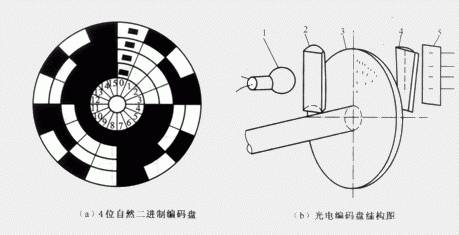A binary encoder is made by applying a carbon film to a horseshoe-shaped sheet of paper and plastic. Absolute encoder manufacturers determine the code by the mechanical position, it does not need to memorize, no need to find a reference point, and do not have to count all the time, when you need to know the position, when to read its position. In this way, the anti-interference characteristics of the encoder, the reliability of the data is greatly improved. The relationship between its resistance change and the position of the intermediate contact is linear, logarithmic and exponential. There are several kinds of binary encoders, including large, small and miniature ones, and some of them are used together with switches to form absolute value encoders with switches. Today to introduce to youBinary Encoder Principle(math.) genusBinary Encoder Features, binary encoder application area.

A binary encoder has three pins like a normal absolute encoder, but internally connected to two of the pins are two metal static tabs of varying lengths, and connected to the third pin is a one-week metal moving tab with teeth. The incremental encoder corresponds to a defined digital code for each position, so that its value is only related to the start and end positions of the measurement, but not to the intermediate process of the measurement. Four states occur when the binary encoder rotates; the binary encoder is made by applying a carbon film to a horseshoe-shaped paper-plastic plate. The relationship between the change in resistance value of the binary encoder and the position of the intermediate contact) is exponential, linear and logarithmic. Binary encoders are divided into miniature, small, and large three kinds, some and switch together to form an absolute value encoder with switch.
I. Wide resistance range.
Second, the temperature coefficient and sliding noise are large. Each position of an incremental encoder corresponds to a defined digital code, so that its indicated value is only related to the start and end positions of the measurement and not to the intermediate process of the measurement.
Third, a wide variety of varieties and applications.
Fourth, it is easy to make and cheap.
V. High discriminatory power.
Sixth, can be made into various types of absolute encoders.
VII. Long life.
Binary Encoder Application Areas
Binary encoders are generally used in medical equipment, mixing consoles, toys, stereos, car stereos, power (the amount of work done by an object per unit of time) amplifiers, radios, DVDs/VCDs, televisions, messaging devices, headphones, lamps, and other related digital and equipment.
Civiti Encoders
Telephone contact: 15050450799 (micro letter with number)
© Kunshan Sividi Co. Site Map Su ICP No. 14036688  Su Gong Network Security No. 32058302003763
Su Gong Network Security No. 32058302003763







